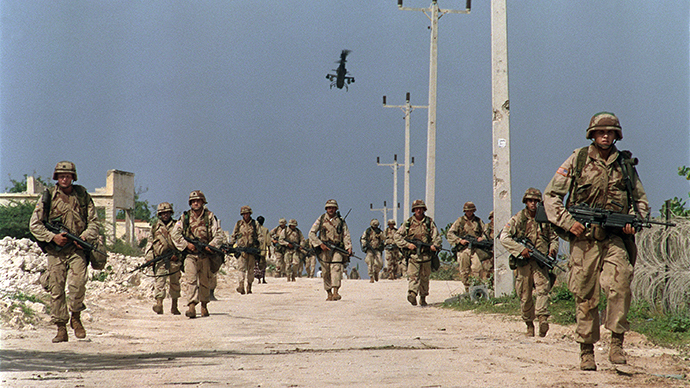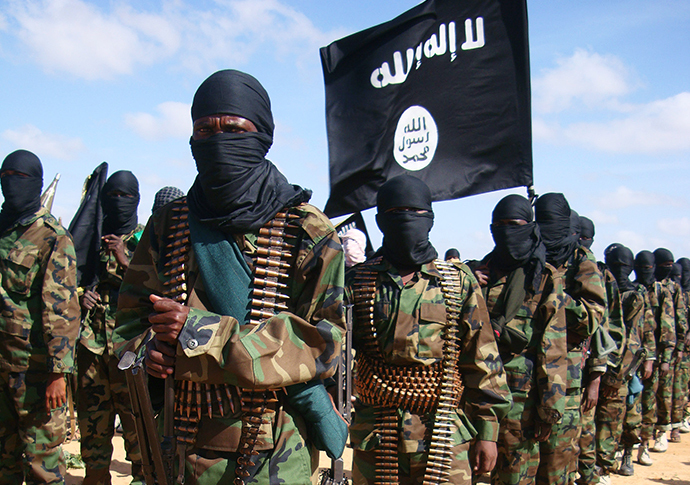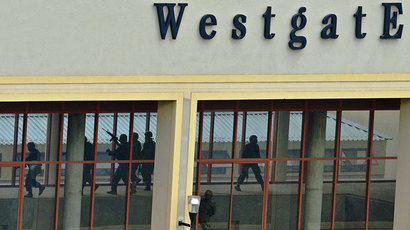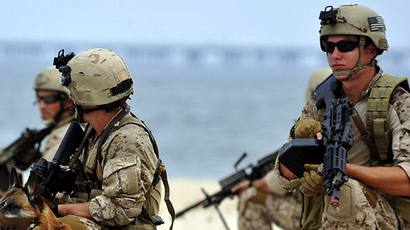20 years after ‘Black Hawk Down,’ US military advisers back in Somalia

The US military has sent a small number of “uniformed trainers and advisers” to volatile nation of Somalia for the first time since 1993, when two US helicopters were shot down and 18 Americans were killed during the “Black Hawk Down” mission.
A small cell of less than two-dozen US military personnel has been stationed in Somalia’s capital, Mogadishu, since last fall in an effort to advise and coordinate with African troops fighting Al-Shabab, an Islamic militia with ties to Al-Qaeda, three US military officials told The Washington Post.
Last summer and fall, US military officials indicated the Pentagon will become more involved in Somalia. The Pentagon’s top policy official in Africa, Amanda Dory, told Congress in October the US military would “increase our presence in Mogadishu in tandem with the State Department” but did not elaborate.
Three anonymous US military officials told The Post US Africa Command sent a small amount of advisers to Mogadishu in the fall to coordinate the cell with Somali security forces and a regional coalition of African troops.
The Pentagon declined to comment on the plans.
The clandestine deployment ends two decades of America’s unofficial policy that prohibited any long-term US military presence on the ground in Somalia despite the country being considered a failed state and teeming with pirate and militant Islamic organizations.
Yet the informal policy has not kept the US from actively participating in Somali affairs. President Barack Obama’s administration runs surveillance drones out of neighboring country Djibouti, occasionally using the unmanned aerial vehicles to conduct airstrikes from Somali skies. In addition, elite Special Operations forces have entered Somalia for swift counter-terrorism raids and hostage situations.
The Central Intelligence Agency has also operated a base in Somalia for some time, financing Somali forces fighting Al-Shabab and other entities. Journalist Jeremy Scahill has documented the CIA’s secretive movements in Somalia. In 2011, he revealed the existence of the CIA’s counterterrorism center at the Mogadishu airport. He also reported on a secret prison in the US-funded Somali National Security Agency, which according to his sources, was used by the US to interrogate prisoners.

In response to The Washington Post’s story Friday, he tweeted, “US has had military 'adviser/trainers' in Somalia for years. Not new.” According to an ABC report US personnel have gone into Somalia, but the latest deployment is the first permanent posting since 1993.
The US finally recognized the federal government of Somalia in 2013 and reestablished diplomatic ties for the first time since the Somali government collapsed in 1991. Yet the State Department does not have a permanent presence in Mogadishu.
In October 1993, a task force of US Army Rangers and Delta Force commandos engaged in a fierce battle with Somali warlord Mohamed Farah Aideed’s fighters in Mogadishu. The US was there in support of a United Nations humanitarian mission. The failure of the operation prompted a quick US withdrawal and a reticence in Washington to engage in new conflicts there.
In recent years, the US has spent over US$500 million to train and arm an African Union security force of over 18,000 soldiers amid ongoing chaos and famine in Somalia. Most of the forces are trained outside Somalia by US contractors and uniformed military advisers. The US has also spent around $170 million to boost the often-ineffective Somali national army.
The African Union forces control most of Mogadishu, though Al-Shabab still holds most of the country. Al-Shabab has led insurgent efforts in Somalia, against the country’s Western-backed leaders, in recent years. It announced a merger with Al-Qaeda two years ago, though how much of a threat they pose to the US is disputed by American analysts.
Al-Shabab has pulled off successful terror plots in East Africa, including the siege of a shopping center in Kenya in September that resulted the death of 67 people.
Despite The Washington Post’s report that “fewer than two-dozen troops” were sent to Mogadishu, ABC News reported later Friday that “less than” five US advisers are now stationed there, according to a Department of Defense official. ABC News also tweeted “advisers were sent to Mogadishu after [Secretary of Defense Chuck] Hagel received request from Somali gov't & [African Union Mission in Somalia].”














